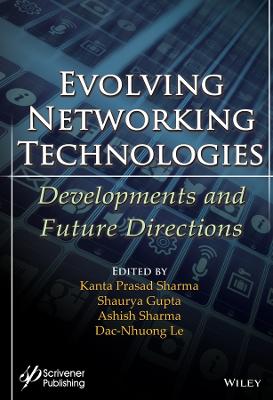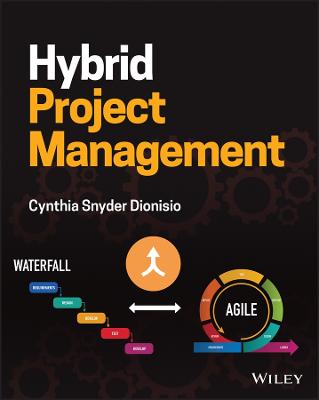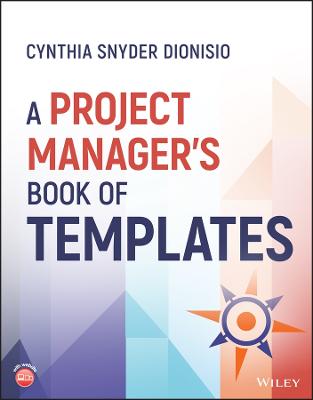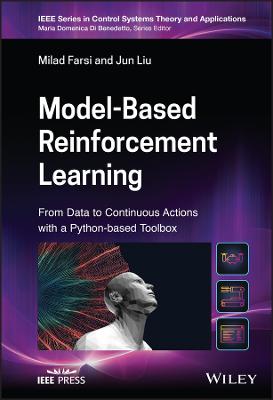Sustainable Manufacturing Systems: An Energy Perspective
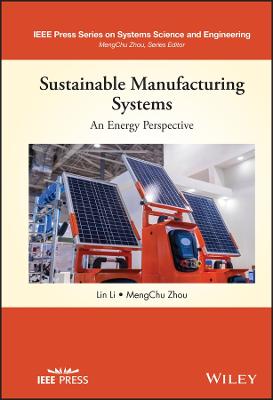 -15%
portes grátis
-15%
portes grátis
Sustainable Manufacturing Systems: An Energy Perspective
Zhou, MengChu; Li, Lin
John Wiley & Sons Inc
10/2022
432
Dura
Inglês
9781119578246
15 a 20 dias
666
Descrição não disponível.
Author Biography xv
Preface xvii
Acknowledgments xxiii
List of Figures xxv
Part I Introductions to Energy Efficiency in Manufacturing Systems 1
1 Introduction 3
1.1 Definitions and Practices of Sustainable Manufacturing 3
1.1.1 Current Status of Manufacturing Industry 3
1.1.2 Sustainability in the Manufacturing Sector and Associated Impacts 5
1.1.3 Sustainable Manufacturing Practices 10
1.2 Fundamental of Manufacturing Systems 12
1.2.1 Stages of Product Manufacturing 12
1.2.2 Classification of Manufacturing Systems 13
1.2.2.1 Job Shop 13
1.2.2.2 Project Shop 14
1.2.2.3 Cellular System 15
1.2.2.4 Flow Line 15
1.2.2.5 Continuous System 15
1.3 Problem Statement and Scope 18
Problems 19
References 19
2 Energy Efficiency in Manufacturing Systems 23
2.1 Energy Consumption in Manufacturing Systems 23
2.1.1 Energy and Power Basics 23
2.1.2 Energy Generation 24
2.1.2.1 Primary Energy 25
2.1.2.2 Secondary Energy 27
2.1.3 Energy Distribution 27
2.1.3.1 Electricity 28
2.1.3.2 Steam 30
2.1.3.3 Compressed Air 30
2.1.4 Energy Consumption 31
2.1.4.1 Indirect End Use 33
2.1.4.2 Direct Process End Use 33
2.1.4.3 Direct Non-process End Use 34
2.2 Energy Saving Potentials and Energy Management Strategies for Manufacturing Systems 35
2.2.1 Machine Level 39
2.2.1.1 Intrinsic Characteristics of Machine Tools 41
2.2.1.2 Processing Conditions 42
2.2.2 System Level 43
2.2.2.1 Inhomogeneous System 44
2.2.2.2 Machine Maintenance 45
2.2.3 Plant Level 46
2.2.3.1 Indirect End Use 46
2.2.3.2 Direct Non-process End Use 47
2.3 Demand-side Energy Management 49
2.3.1 Electricity Bill Components 50
2.3.1.1 Electricity Cost 51
2.3.1.2 Demand Cost 51
2.3.1.3 Fixed Cost 52
2.3.2 Energy Efficiency Programs 52
2.3.3 Demand Response Programs 55
2.3.3.1 Incentive-based Programs 56
2.3.3.2 Price Base Options 57
Problems 59
References 59
Part II Mathematical Tools and Modeling Basics 65
3 Mathematical Tools 67
3.1 Probability 67
3.1.1 Fundamentals of Probability Theory 67
3.1.1.1 Basics of Probability Theory 67
3.1.1.2 Axioms of Probability Theory 69
3.1.1.3 Conditional Probability and Independence 72
3.1.1.4 Total Probability Theorem 73
3.1.1.5 Bayes' Law 74
3.1.2 Random Variables 74
3.1.2.1 Discrete Random Variables 75
3.1.2.2 Continuous Random Variables 82
3.1.3 Random Process 88
3.1.3.1 Discrete-time Markov Chain 89
3.1.3.2 Continuous-time Markov Chain 92
3.2 Petri Net 94
3.2.1 Formal Definition of Petri Net 95
3.2.1.1 Definition of Petri Net 95
3.2.2 Classical Petri Net 99
3.2.2.1 State Machine Petri Net 101
3.2.2.2 Marked Graph 102
3.2.2.3 Systematic Modeling Methods 105
3.2.3 Deterministic Timed Petri Net 106
3.2.4 Stochastic Petri Net 109
3.3 Optimization Methods 113
3.3.1 Fundamentals of Optimization 113
3.3.1.1 Objective Function 114
3.3.1.2 Decision Variables 114
3.3.1.3 Constraints 115
3.3.1.4 Local and Global Optimum 116
3.3.1.5 Near-optimal Solutions 117
3.3.1.6 Single-objective and Multi-objective Optimization 117
3.3.1.7 Deterministic and Stochastic Optimization 118
3.3.2 Genetic Algorithms 119
3.3.2.1 Initialization 119
3.3.2.2 Evaluation 121
3.3.2.3 Selection 121
3.3.2.4 Crossover 123
3.3.2.5 Mutation 124
3.3.2.6 Termination Criteria 125
3.3.3 Particle Swarm Optimizer (PSO) 126
3.3.3.1 Initialization 126
3.3.3.2 Evaluation 128
3.3.3.3 Personal and Global Best Positions 128
3.3.3.4 Updating Velocity and Position 129
3.3.3.5 Termination Criteria 132
Problems 132
References 134
4 Mathematical Modeling of Manufacturing Systems 139
4.1 Basics in Manufacturing System Modeling 139
4.1.1 Structure of Manufacturing Systems 139
4.1.1.1 Basic Components 139
4.1.1.2 Structural Modeling 140
4.1.1.3 Types of Manufacturing Systems 141
4.1.2 Mathematical Models of Machines and Buffers 142
4.1.2.1 Timing Issues for Machines 143
4.1.2.2 Machine Reliability Models 143
4.1.2.3 Parameters of Aggregated Machines 145
4.1.2.4 Mathematical Model of Buffers 146
4.1.2.5 Interaction Between Machines and Buffers 147
4.1.2.6 Buffer State Transition 147
4.1.2.7 Blockage and Starvation 148
4.1.3 Performance Measures 150
4.1.3.1 Blockage and Starvation 150
4.1.3.2 Production Rate and Throughput 151
4.1.3.3 Work-in-process 151
4.2 Two-machine Production Lines 152
4.2.1 Conventions and Notations 152
4.2.1.1 Assumptions 152
4.2.1.2 Notations 152
4.2.2 State Transition 154
4.2.2.1 State Transition Probabilities 155
4.2.2.2 System Dynamics 157
4.2.3 Steady-state Probabilities 157
4.2.3.1 Identical Machines 159
4.2.3.2 Nonidentical Machines 160
4.2.4 Performance Measures 161
4.2.4.1 Blockage and Starvation 161
4.2.4.2 Production Rate 161
4.2.4.3 Work-in-process 162
4.3 Multi-machine Production Lines 162
4.3.1 Assumptions and Notations 163
4.3.1.1 Assumptions 163
4.3.1.2 Notations 163
4.3.2 State Transition 164
4.3.2.1 State Transition Probabilities 165
4.3.2.2 System Dynamics 167
4.3.3 Performance Measures 167
4.3.3.1 Blockage and Starvation 167
4.3.3.2 Production Rate 168
4.3.3.3 Work-in-process 169
4.3.4 System Modeling with Iteration-based Method 169
4.4 Production Lines Coupled with Material Handling Systems 174
4.4.1 Assumptions and Notations 174
4.4.1.1 Assumptions 175
4.4.1.2 Notations 175
4.4.2 State Transition and Performance 175
4.4.2.1 Blockage and Starvation 175
4.4.2.2 Production Rate 176
Problems 179
References 180
5 Energy Efficiency Characterization in Manufacturing Systems 181
5.1 Energy Consumption Modeling 181
5.1.1 Operation-based Energy Modeling 182
5.1.2 Component-based Energy Modeling 185
5.1.3 System-level Energy Modeling 188
5.2 Energy Cost modeling 191
5.2.1 Energy Cost Under Flat Rate 192
5.2.1.1 Energy Consumption Cost 192
5.2.1.2 Demand Cost 192
5.2.2 Energy Cost Under Time-of-use Rate 196
5.2.2.1 Energy Consumption Cost 196
5.2.2.2 Demand Cost 198
5.2.3 Energy Cost Under Critical Peak Price (CPP) 199
5.2.3.1 Energy Consumption Cost 199
5.2.3.2 Demand Cost 200
Problems 203
References 203
Part III Energy Management in Typical Manufacturing Systems 205
6 Electricity Demand Response for Manufacturing Systems 207
6.1 Time-of-use Pricing for Manufacturing Systems 208
6.1.1 Introduction to TOU 208
6.1.2 Survey of TOU Pricing in US Utilities 209
6.1.3 Comparison of Energy Cost Between Flat Rate and TOU Rates 210
6.2 TOU-Based Production Scheduling for Manufacturing Systems 216
6.2.1 Manufacturing Systems Modeling 216
6.2.2 Energy Consumption and Energy Cost Modeling 218
6.2.3 Production Scheduling for TOU-based Demand Response 219
6.2.3.1 Production Scheduling Problem Formulation 219
6.2.3.2 PSO Algorithm for Near-optimal Solutions 220
6.2.3.3 Case Study Setup 221
6.2.3.4 Optimal Production Schedules 222
6.3 Critical Peak Pricing for Manufacturing Systems 228
6.3.1 Introduction to Critical Peak Pricing (CPP) 228
6.3.2 Comparison of Energy Cost Between TOU and CPP Rates 229
Problems 234
Appendix 3.A Supplementary Information of Demand Response Tariffs 235
References 255
7 Energy Control and Optimization for Manufacturing Systems Utilizing Combined Heat and Power System 257
7.1 Introduction to Combined Heat and Power System 257
7.2 Problem Definition and Modeling 258
7.2.1 Objective Function 260
7.2.1.1 Electricity Cost 260
7.2.1.2 Operation Cost for the CHP System and Boiler 261
7.2.2 Constraints 262
7.3 Solution Approach 263
7.3.1 Initialization 263
7.3.2 Evaluation 264
7.3.3 Updating Process 265
7.4 Case Study 266
7.4.1 Case Study Settings 267
7.4.2 Results and Discussions 269
Problems 270
References 271
8 Plant-level Energy Management for Combined Manufacturing and HVAC System 273
8.1 Definition and Modeling 273
8.1.1 Objective Function 274
8.1.1.1 Calculate TEL(t) 276
8.1.1.2 Estimate q(t) 278
8.1.2 Constraints 279
8.2 Solution Approach 281
8.2.1 Initialization 281
8.2.2 Evaluation 282
8.2.3 Updating Process 282
8.3 Case Study 283
8.3.1 Model Settings 284
8.3.2 Results and Discussions 287
Problems 289
References 290
Part IV Energy Management in Advanced Manufacturing Systems 291
9 Energy Analysis of Stereolithography-based Additive Manufacturing 293
9.1 Introduction to Additive Manufacturing 293
9.1.1 Illustration of MIP SL-based AM Process 294
9.2 Energy Consumption Modeling 296
9.2.1 Energy Consumption of UV Curing Process 297
9.2.2 Energy Consumption of Building Platform Movement 298
9.2.3 Energy Consumption of Cooling System 298
9.3 Experimentation 298
9.3.1 Experiment Design Methodology 298
9.3.2 Experiment Apparatus 299
9.4 Results and Discussions 300
9.4.1 Baseline Case Results Using Default Conditions 300
9.4.2 Factorial Analysis Results 302
9.4.3 Product Quality Comparison 305
Problems 308
References 308
10 Energy Efficiency Modeling and Optimization of Cellulosic Biofuel Manufacturing System 311
10.1 Introduction to Cellulosic Biofuel Manufacturing 311
10.2 Energy Modeling of Cellulosic Biofuel Production 313
10.2.1 Energy Modeling of Biomass Size Reduction Process 314
10.2.2 Energy Modeling of Biofuel Chemical Conversion Processes 314
10.2.2.1 Heating Energy 315
10.2.2.2 Energy Loss 316
10.2.2.3 Reaction Energy 317
10.2.2.4 Energy Recovery 320
10.2.2.5 Total Energy Consumption 321
10.3 Energy Consumption Optimization Using PSO 321
10.3.1 Problem Formulation 321
10.3.2 Solution Procedures 322
10.3.2.1 Initialization 322
10.3.2.2 Evaluation 323
10.3.2.3 Updating Process 323
10.4 Case Study 323
10.4.1 Case Settings 324
10.4.2 Energy Analysis of Baseline Case 324
10.4.2.1 Energy Consumption Breakdown 324
10.4.3 Energy Analysis of Optimal Results 327
Problems 328
References 329
11 Energy-consumption Minimized Scheduling of Flexible Manufacturing Systems 333
11.1 Introduction 334
11.2 Construction of Place-timed PN for FMS Scheduling 335
11.2.1 Basic Definitions of PN 335
11.2.2 Place-timed PN Scheduling Models of FMS 336
11.3 Energy Consumption Functions 338
11.3.1 Calculating the Earliest Firing Time of Transitions 339
11.3.2 Two Energy Consumption Functions 340
11.3.2.1 Energy Consumption Function E1 341
11.3.2.2 Energy Consumption Function E2 341
11.4 Dynamic Programming for Scheduling FMS 344
11.4.1 Formulation of DP for FMSs 344
11.4.1.1 States and Stages 344
11.4.1.2 State Transition Equation 344
11.4.1.3 Bellman Equation 345
11.4.2 Reachability Graph of PNS 345
11.4.3 DP Implementation for Scheduling FMS 347
11.5 Modified Dynamic Programming for Scheduling FMS 348
11.5.1 Evaluation Function of Transition Sequences 349
11.5.2 Heuristic Function 350
11.5.3 MDP Algorithm for FMS Scheduling 351
11.6 Case Study 353
11.7 Summary 358
Problems 358
References 359
Part V Summaries and Conclusions 363
12 Research Trends and Future Directions in Sustainable Industrial Development 365
12.1 Insights into Sustainable Industrial Development 365
12.2 Energy and Resource Efficiency in Manufacturing 366
12.2.1 Equipment Design 366
12.2.2 Smart Manufacturing 367
12.3 Industrial Symbiosis 369
12.4 Supply Chain Management 371
12.5 Circular Economy 373
12.6 Life Cycle Assessment 376
References 378
Glossary 387
Acronyms 391
Index 393
Preface xvii
Acknowledgments xxiii
List of Figures xxv
Part I Introductions to Energy Efficiency in Manufacturing Systems 1
1 Introduction 3
1.1 Definitions and Practices of Sustainable Manufacturing 3
1.1.1 Current Status of Manufacturing Industry 3
1.1.2 Sustainability in the Manufacturing Sector and Associated Impacts 5
1.1.3 Sustainable Manufacturing Practices 10
1.2 Fundamental of Manufacturing Systems 12
1.2.1 Stages of Product Manufacturing 12
1.2.2 Classification of Manufacturing Systems 13
1.2.2.1 Job Shop 13
1.2.2.2 Project Shop 14
1.2.2.3 Cellular System 15
1.2.2.4 Flow Line 15
1.2.2.5 Continuous System 15
1.3 Problem Statement and Scope 18
Problems 19
References 19
2 Energy Efficiency in Manufacturing Systems 23
2.1 Energy Consumption in Manufacturing Systems 23
2.1.1 Energy and Power Basics 23
2.1.2 Energy Generation 24
2.1.2.1 Primary Energy 25
2.1.2.2 Secondary Energy 27
2.1.3 Energy Distribution 27
2.1.3.1 Electricity 28
2.1.3.2 Steam 30
2.1.3.3 Compressed Air 30
2.1.4 Energy Consumption 31
2.1.4.1 Indirect End Use 33
2.1.4.2 Direct Process End Use 33
2.1.4.3 Direct Non-process End Use 34
2.2 Energy Saving Potentials and Energy Management Strategies for Manufacturing Systems 35
2.2.1 Machine Level 39
2.2.1.1 Intrinsic Characteristics of Machine Tools 41
2.2.1.2 Processing Conditions 42
2.2.2 System Level 43
2.2.2.1 Inhomogeneous System 44
2.2.2.2 Machine Maintenance 45
2.2.3 Plant Level 46
2.2.3.1 Indirect End Use 46
2.2.3.2 Direct Non-process End Use 47
2.3 Demand-side Energy Management 49
2.3.1 Electricity Bill Components 50
2.3.1.1 Electricity Cost 51
2.3.1.2 Demand Cost 51
2.3.1.3 Fixed Cost 52
2.3.2 Energy Efficiency Programs 52
2.3.3 Demand Response Programs 55
2.3.3.1 Incentive-based Programs 56
2.3.3.2 Price Base Options 57
Problems 59
References 59
Part II Mathematical Tools and Modeling Basics 65
3 Mathematical Tools 67
3.1 Probability 67
3.1.1 Fundamentals of Probability Theory 67
3.1.1.1 Basics of Probability Theory 67
3.1.1.2 Axioms of Probability Theory 69
3.1.1.3 Conditional Probability and Independence 72
3.1.1.4 Total Probability Theorem 73
3.1.1.5 Bayes' Law 74
3.1.2 Random Variables 74
3.1.2.1 Discrete Random Variables 75
3.1.2.2 Continuous Random Variables 82
3.1.3 Random Process 88
3.1.3.1 Discrete-time Markov Chain 89
3.1.3.2 Continuous-time Markov Chain 92
3.2 Petri Net 94
3.2.1 Formal Definition of Petri Net 95
3.2.1.1 Definition of Petri Net 95
3.2.2 Classical Petri Net 99
3.2.2.1 State Machine Petri Net 101
3.2.2.2 Marked Graph 102
3.2.2.3 Systematic Modeling Methods 105
3.2.3 Deterministic Timed Petri Net 106
3.2.4 Stochastic Petri Net 109
3.3 Optimization Methods 113
3.3.1 Fundamentals of Optimization 113
3.3.1.1 Objective Function 114
3.3.1.2 Decision Variables 114
3.3.1.3 Constraints 115
3.3.1.4 Local and Global Optimum 116
3.3.1.5 Near-optimal Solutions 117
3.3.1.6 Single-objective and Multi-objective Optimization 117
3.3.1.7 Deterministic and Stochastic Optimization 118
3.3.2 Genetic Algorithms 119
3.3.2.1 Initialization 119
3.3.2.2 Evaluation 121
3.3.2.3 Selection 121
3.3.2.4 Crossover 123
3.3.2.5 Mutation 124
3.3.2.6 Termination Criteria 125
3.3.3 Particle Swarm Optimizer (PSO) 126
3.3.3.1 Initialization 126
3.3.3.2 Evaluation 128
3.3.3.3 Personal and Global Best Positions 128
3.3.3.4 Updating Velocity and Position 129
3.3.3.5 Termination Criteria 132
Problems 132
References 134
4 Mathematical Modeling of Manufacturing Systems 139
4.1 Basics in Manufacturing System Modeling 139
4.1.1 Structure of Manufacturing Systems 139
4.1.1.1 Basic Components 139
4.1.1.2 Structural Modeling 140
4.1.1.3 Types of Manufacturing Systems 141
4.1.2 Mathematical Models of Machines and Buffers 142
4.1.2.1 Timing Issues for Machines 143
4.1.2.2 Machine Reliability Models 143
4.1.2.3 Parameters of Aggregated Machines 145
4.1.2.4 Mathematical Model of Buffers 146
4.1.2.5 Interaction Between Machines and Buffers 147
4.1.2.6 Buffer State Transition 147
4.1.2.7 Blockage and Starvation 148
4.1.3 Performance Measures 150
4.1.3.1 Blockage and Starvation 150
4.1.3.2 Production Rate and Throughput 151
4.1.3.3 Work-in-process 151
4.2 Two-machine Production Lines 152
4.2.1 Conventions and Notations 152
4.2.1.1 Assumptions 152
4.2.1.2 Notations 152
4.2.2 State Transition 154
4.2.2.1 State Transition Probabilities 155
4.2.2.2 System Dynamics 157
4.2.3 Steady-state Probabilities 157
4.2.3.1 Identical Machines 159
4.2.3.2 Nonidentical Machines 160
4.2.4 Performance Measures 161
4.2.4.1 Blockage and Starvation 161
4.2.4.2 Production Rate 161
4.2.4.3 Work-in-process 162
4.3 Multi-machine Production Lines 162
4.3.1 Assumptions and Notations 163
4.3.1.1 Assumptions 163
4.3.1.2 Notations 163
4.3.2 State Transition 164
4.3.2.1 State Transition Probabilities 165
4.3.2.2 System Dynamics 167
4.3.3 Performance Measures 167
4.3.3.1 Blockage and Starvation 167
4.3.3.2 Production Rate 168
4.3.3.3 Work-in-process 169
4.3.4 System Modeling with Iteration-based Method 169
4.4 Production Lines Coupled with Material Handling Systems 174
4.4.1 Assumptions and Notations 174
4.4.1.1 Assumptions 175
4.4.1.2 Notations 175
4.4.2 State Transition and Performance 175
4.4.2.1 Blockage and Starvation 175
4.4.2.2 Production Rate 176
Problems 179
References 180
5 Energy Efficiency Characterization in Manufacturing Systems 181
5.1 Energy Consumption Modeling 181
5.1.1 Operation-based Energy Modeling 182
5.1.2 Component-based Energy Modeling 185
5.1.3 System-level Energy Modeling 188
5.2 Energy Cost modeling 191
5.2.1 Energy Cost Under Flat Rate 192
5.2.1.1 Energy Consumption Cost 192
5.2.1.2 Demand Cost 192
5.2.2 Energy Cost Under Time-of-use Rate 196
5.2.2.1 Energy Consumption Cost 196
5.2.2.2 Demand Cost 198
5.2.3 Energy Cost Under Critical Peak Price (CPP) 199
5.2.3.1 Energy Consumption Cost 199
5.2.3.2 Demand Cost 200
Problems 203
References 203
Part III Energy Management in Typical Manufacturing Systems 205
6 Electricity Demand Response for Manufacturing Systems 207
6.1 Time-of-use Pricing for Manufacturing Systems 208
6.1.1 Introduction to TOU 208
6.1.2 Survey of TOU Pricing in US Utilities 209
6.1.3 Comparison of Energy Cost Between Flat Rate and TOU Rates 210
6.2 TOU-Based Production Scheduling for Manufacturing Systems 216
6.2.1 Manufacturing Systems Modeling 216
6.2.2 Energy Consumption and Energy Cost Modeling 218
6.2.3 Production Scheduling for TOU-based Demand Response 219
6.2.3.1 Production Scheduling Problem Formulation 219
6.2.3.2 PSO Algorithm for Near-optimal Solutions 220
6.2.3.3 Case Study Setup 221
6.2.3.4 Optimal Production Schedules 222
6.3 Critical Peak Pricing for Manufacturing Systems 228
6.3.1 Introduction to Critical Peak Pricing (CPP) 228
6.3.2 Comparison of Energy Cost Between TOU and CPP Rates 229
Problems 234
Appendix 3.A Supplementary Information of Demand Response Tariffs 235
References 255
7 Energy Control and Optimization for Manufacturing Systems Utilizing Combined Heat and Power System 257
7.1 Introduction to Combined Heat and Power System 257
7.2 Problem Definition and Modeling 258
7.2.1 Objective Function 260
7.2.1.1 Electricity Cost 260
7.2.1.2 Operation Cost for the CHP System and Boiler 261
7.2.2 Constraints 262
7.3 Solution Approach 263
7.3.1 Initialization 263
7.3.2 Evaluation 264
7.3.3 Updating Process 265
7.4 Case Study 266
7.4.1 Case Study Settings 267
7.4.2 Results and Discussions 269
Problems 270
References 271
8 Plant-level Energy Management for Combined Manufacturing and HVAC System 273
8.1 Definition and Modeling 273
8.1.1 Objective Function 274
8.1.1.1 Calculate TEL(t) 276
8.1.1.2 Estimate q(t) 278
8.1.2 Constraints 279
8.2 Solution Approach 281
8.2.1 Initialization 281
8.2.2 Evaluation 282
8.2.3 Updating Process 282
8.3 Case Study 283
8.3.1 Model Settings 284
8.3.2 Results and Discussions 287
Problems 289
References 290
Part IV Energy Management in Advanced Manufacturing Systems 291
9 Energy Analysis of Stereolithography-based Additive Manufacturing 293
9.1 Introduction to Additive Manufacturing 293
9.1.1 Illustration of MIP SL-based AM Process 294
9.2 Energy Consumption Modeling 296
9.2.1 Energy Consumption of UV Curing Process 297
9.2.2 Energy Consumption of Building Platform Movement 298
9.2.3 Energy Consumption of Cooling System 298
9.3 Experimentation 298
9.3.1 Experiment Design Methodology 298
9.3.2 Experiment Apparatus 299
9.4 Results and Discussions 300
9.4.1 Baseline Case Results Using Default Conditions 300
9.4.2 Factorial Analysis Results 302
9.4.3 Product Quality Comparison 305
Problems 308
References 308
10 Energy Efficiency Modeling and Optimization of Cellulosic Biofuel Manufacturing System 311
10.1 Introduction to Cellulosic Biofuel Manufacturing 311
10.2 Energy Modeling of Cellulosic Biofuel Production 313
10.2.1 Energy Modeling of Biomass Size Reduction Process 314
10.2.2 Energy Modeling of Biofuel Chemical Conversion Processes 314
10.2.2.1 Heating Energy 315
10.2.2.2 Energy Loss 316
10.2.2.3 Reaction Energy 317
10.2.2.4 Energy Recovery 320
10.2.2.5 Total Energy Consumption 321
10.3 Energy Consumption Optimization Using PSO 321
10.3.1 Problem Formulation 321
10.3.2 Solution Procedures 322
10.3.2.1 Initialization 322
10.3.2.2 Evaluation 323
10.3.2.3 Updating Process 323
10.4 Case Study 323
10.4.1 Case Settings 324
10.4.2 Energy Analysis of Baseline Case 324
10.4.2.1 Energy Consumption Breakdown 324
10.4.3 Energy Analysis of Optimal Results 327
Problems 328
References 329
11 Energy-consumption Minimized Scheduling of Flexible Manufacturing Systems 333
11.1 Introduction 334
11.2 Construction of Place-timed PN for FMS Scheduling 335
11.2.1 Basic Definitions of PN 335
11.2.2 Place-timed PN Scheduling Models of FMS 336
11.3 Energy Consumption Functions 338
11.3.1 Calculating the Earliest Firing Time of Transitions 339
11.3.2 Two Energy Consumption Functions 340
11.3.2.1 Energy Consumption Function E1 341
11.3.2.2 Energy Consumption Function E2 341
11.4 Dynamic Programming for Scheduling FMS 344
11.4.1 Formulation of DP for FMSs 344
11.4.1.1 States and Stages 344
11.4.1.2 State Transition Equation 344
11.4.1.3 Bellman Equation 345
11.4.2 Reachability Graph of PNS 345
11.4.3 DP Implementation for Scheduling FMS 347
11.5 Modified Dynamic Programming for Scheduling FMS 348
11.5.1 Evaluation Function of Transition Sequences 349
11.5.2 Heuristic Function 350
11.5.3 MDP Algorithm for FMS Scheduling 351
11.6 Case Study 353
11.7 Summary 358
Problems 358
References 359
Part V Summaries and Conclusions 363
12 Research Trends and Future Directions in Sustainable Industrial Development 365
12.1 Insights into Sustainable Industrial Development 365
12.2 Energy and Resource Efficiency in Manufacturing 366
12.2.1 Equipment Design 366
12.2.2 Smart Manufacturing 367
12.3 Industrial Symbiosis 369
12.4 Supply Chain Management 371
12.5 Circular Economy 373
12.6 Life Cycle Assessment 376
References 378
Glossary 387
Acronyms 391
Index 393
Este título pertence ao(s) assunto(s) indicados(s). Para ver outros títulos clique no assunto desejado.
Manufacturing energy efficiency; energy efficient manufacturing; green manufacturing; green industry; energy efficient industry; mathematical modeling for manufacturing; electricity demand response; energy control in manufacturing
Author Biography xv
Preface xvii
Acknowledgments xxiii
List of Figures xxv
Part I Introductions to Energy Efficiency in Manufacturing Systems 1
1 Introduction 3
1.1 Definitions and Practices of Sustainable Manufacturing 3
1.1.1 Current Status of Manufacturing Industry 3
1.1.2 Sustainability in the Manufacturing Sector and Associated Impacts 5
1.1.3 Sustainable Manufacturing Practices 10
1.2 Fundamental of Manufacturing Systems 12
1.2.1 Stages of Product Manufacturing 12
1.2.2 Classification of Manufacturing Systems 13
1.2.2.1 Job Shop 13
1.2.2.2 Project Shop 14
1.2.2.3 Cellular System 15
1.2.2.4 Flow Line 15
1.2.2.5 Continuous System 15
1.3 Problem Statement and Scope 18
Problems 19
References 19
2 Energy Efficiency in Manufacturing Systems 23
2.1 Energy Consumption in Manufacturing Systems 23
2.1.1 Energy and Power Basics 23
2.1.2 Energy Generation 24
2.1.2.1 Primary Energy 25
2.1.2.2 Secondary Energy 27
2.1.3 Energy Distribution 27
2.1.3.1 Electricity 28
2.1.3.2 Steam 30
2.1.3.3 Compressed Air 30
2.1.4 Energy Consumption 31
2.1.4.1 Indirect End Use 33
2.1.4.2 Direct Process End Use 33
2.1.4.3 Direct Non-process End Use 34
2.2 Energy Saving Potentials and Energy Management Strategies for Manufacturing Systems 35
2.2.1 Machine Level 39
2.2.1.1 Intrinsic Characteristics of Machine Tools 41
2.2.1.2 Processing Conditions 42
2.2.2 System Level 43
2.2.2.1 Inhomogeneous System 44
2.2.2.2 Machine Maintenance 45
2.2.3 Plant Level 46
2.2.3.1 Indirect End Use 46
2.2.3.2 Direct Non-process End Use 47
2.3 Demand-side Energy Management 49
2.3.1 Electricity Bill Components 50
2.3.1.1 Electricity Cost 51
2.3.1.2 Demand Cost 51
2.3.1.3 Fixed Cost 52
2.3.2 Energy Efficiency Programs 52
2.3.3 Demand Response Programs 55
2.3.3.1 Incentive-based Programs 56
2.3.3.2 Price Base Options 57
Problems 59
References 59
Part II Mathematical Tools and Modeling Basics 65
3 Mathematical Tools 67
3.1 Probability 67
3.1.1 Fundamentals of Probability Theory 67
3.1.1.1 Basics of Probability Theory 67
3.1.1.2 Axioms of Probability Theory 69
3.1.1.3 Conditional Probability and Independence 72
3.1.1.4 Total Probability Theorem 73
3.1.1.5 Bayes' Law 74
3.1.2 Random Variables 74
3.1.2.1 Discrete Random Variables 75
3.1.2.2 Continuous Random Variables 82
3.1.3 Random Process 88
3.1.3.1 Discrete-time Markov Chain 89
3.1.3.2 Continuous-time Markov Chain 92
3.2 Petri Net 94
3.2.1 Formal Definition of Petri Net 95
3.2.1.1 Definition of Petri Net 95
3.2.2 Classical Petri Net 99
3.2.2.1 State Machine Petri Net 101
3.2.2.2 Marked Graph 102
3.2.2.3 Systematic Modeling Methods 105
3.2.3 Deterministic Timed Petri Net 106
3.2.4 Stochastic Petri Net 109
3.3 Optimization Methods 113
3.3.1 Fundamentals of Optimization 113
3.3.1.1 Objective Function 114
3.3.1.2 Decision Variables 114
3.3.1.3 Constraints 115
3.3.1.4 Local and Global Optimum 116
3.3.1.5 Near-optimal Solutions 117
3.3.1.6 Single-objective and Multi-objective Optimization 117
3.3.1.7 Deterministic and Stochastic Optimization 118
3.3.2 Genetic Algorithms 119
3.3.2.1 Initialization 119
3.3.2.2 Evaluation 121
3.3.2.3 Selection 121
3.3.2.4 Crossover 123
3.3.2.5 Mutation 124
3.3.2.6 Termination Criteria 125
3.3.3 Particle Swarm Optimizer (PSO) 126
3.3.3.1 Initialization 126
3.3.3.2 Evaluation 128
3.3.3.3 Personal and Global Best Positions 128
3.3.3.4 Updating Velocity and Position 129
3.3.3.5 Termination Criteria 132
Problems 132
References 134
4 Mathematical Modeling of Manufacturing Systems 139
4.1 Basics in Manufacturing System Modeling 139
4.1.1 Structure of Manufacturing Systems 139
4.1.1.1 Basic Components 139
4.1.1.2 Structural Modeling 140
4.1.1.3 Types of Manufacturing Systems 141
4.1.2 Mathematical Models of Machines and Buffers 142
4.1.2.1 Timing Issues for Machines 143
4.1.2.2 Machine Reliability Models 143
4.1.2.3 Parameters of Aggregated Machines 145
4.1.2.4 Mathematical Model of Buffers 146
4.1.2.5 Interaction Between Machines and Buffers 147
4.1.2.6 Buffer State Transition 147
4.1.2.7 Blockage and Starvation 148
4.1.3 Performance Measures 150
4.1.3.1 Blockage and Starvation 150
4.1.3.2 Production Rate and Throughput 151
4.1.3.3 Work-in-process 151
4.2 Two-machine Production Lines 152
4.2.1 Conventions and Notations 152
4.2.1.1 Assumptions 152
4.2.1.2 Notations 152
4.2.2 State Transition 154
4.2.2.1 State Transition Probabilities 155
4.2.2.2 System Dynamics 157
4.2.3 Steady-state Probabilities 157
4.2.3.1 Identical Machines 159
4.2.3.2 Nonidentical Machines 160
4.2.4 Performance Measures 161
4.2.4.1 Blockage and Starvation 161
4.2.4.2 Production Rate 161
4.2.4.3 Work-in-process 162
4.3 Multi-machine Production Lines 162
4.3.1 Assumptions and Notations 163
4.3.1.1 Assumptions 163
4.3.1.2 Notations 163
4.3.2 State Transition 164
4.3.2.1 State Transition Probabilities 165
4.3.2.2 System Dynamics 167
4.3.3 Performance Measures 167
4.3.3.1 Blockage and Starvation 167
4.3.3.2 Production Rate 168
4.3.3.3 Work-in-process 169
4.3.4 System Modeling with Iteration-based Method 169
4.4 Production Lines Coupled with Material Handling Systems 174
4.4.1 Assumptions and Notations 174
4.4.1.1 Assumptions 175
4.4.1.2 Notations 175
4.4.2 State Transition and Performance 175
4.4.2.1 Blockage and Starvation 175
4.4.2.2 Production Rate 176
Problems 179
References 180
5 Energy Efficiency Characterization in Manufacturing Systems 181
5.1 Energy Consumption Modeling 181
5.1.1 Operation-based Energy Modeling 182
5.1.2 Component-based Energy Modeling 185
5.1.3 System-level Energy Modeling 188
5.2 Energy Cost modeling 191
5.2.1 Energy Cost Under Flat Rate 192
5.2.1.1 Energy Consumption Cost 192
5.2.1.2 Demand Cost 192
5.2.2 Energy Cost Under Time-of-use Rate 196
5.2.2.1 Energy Consumption Cost 196
5.2.2.2 Demand Cost 198
5.2.3 Energy Cost Under Critical Peak Price (CPP) 199
5.2.3.1 Energy Consumption Cost 199
5.2.3.2 Demand Cost 200
Problems 203
References 203
Part III Energy Management in Typical Manufacturing Systems 205
6 Electricity Demand Response for Manufacturing Systems 207
6.1 Time-of-use Pricing for Manufacturing Systems 208
6.1.1 Introduction to TOU 208
6.1.2 Survey of TOU Pricing in US Utilities 209
6.1.3 Comparison of Energy Cost Between Flat Rate and TOU Rates 210
6.2 TOU-Based Production Scheduling for Manufacturing Systems 216
6.2.1 Manufacturing Systems Modeling 216
6.2.2 Energy Consumption and Energy Cost Modeling 218
6.2.3 Production Scheduling for TOU-based Demand Response 219
6.2.3.1 Production Scheduling Problem Formulation 219
6.2.3.2 PSO Algorithm for Near-optimal Solutions 220
6.2.3.3 Case Study Setup 221
6.2.3.4 Optimal Production Schedules 222
6.3 Critical Peak Pricing for Manufacturing Systems 228
6.3.1 Introduction to Critical Peak Pricing (CPP) 228
6.3.2 Comparison of Energy Cost Between TOU and CPP Rates 229
Problems 234
Appendix 3.A Supplementary Information of Demand Response Tariffs 235
References 255
7 Energy Control and Optimization for Manufacturing Systems Utilizing Combined Heat and Power System 257
7.1 Introduction to Combined Heat and Power System 257
7.2 Problem Definition and Modeling 258
7.2.1 Objective Function 260
7.2.1.1 Electricity Cost 260
7.2.1.2 Operation Cost for the CHP System and Boiler 261
7.2.2 Constraints 262
7.3 Solution Approach 263
7.3.1 Initialization 263
7.3.2 Evaluation 264
7.3.3 Updating Process 265
7.4 Case Study 266
7.4.1 Case Study Settings 267
7.4.2 Results and Discussions 269
Problems 270
References 271
8 Plant-level Energy Management for Combined Manufacturing and HVAC System 273
8.1 Definition and Modeling 273
8.1.1 Objective Function 274
8.1.1.1 Calculate TEL(t) 276
8.1.1.2 Estimate q(t) 278
8.1.2 Constraints 279
8.2 Solution Approach 281
8.2.1 Initialization 281
8.2.2 Evaluation 282
8.2.3 Updating Process 282
8.3 Case Study 283
8.3.1 Model Settings 284
8.3.2 Results and Discussions 287
Problems 289
References 290
Part IV Energy Management in Advanced Manufacturing Systems 291
9 Energy Analysis of Stereolithography-based Additive Manufacturing 293
9.1 Introduction to Additive Manufacturing 293
9.1.1 Illustration of MIP SL-based AM Process 294
9.2 Energy Consumption Modeling 296
9.2.1 Energy Consumption of UV Curing Process 297
9.2.2 Energy Consumption of Building Platform Movement 298
9.2.3 Energy Consumption of Cooling System 298
9.3 Experimentation 298
9.3.1 Experiment Design Methodology 298
9.3.2 Experiment Apparatus 299
9.4 Results and Discussions 300
9.4.1 Baseline Case Results Using Default Conditions 300
9.4.2 Factorial Analysis Results 302
9.4.3 Product Quality Comparison 305
Problems 308
References 308
10 Energy Efficiency Modeling and Optimization of Cellulosic Biofuel Manufacturing System 311
10.1 Introduction to Cellulosic Biofuel Manufacturing 311
10.2 Energy Modeling of Cellulosic Biofuel Production 313
10.2.1 Energy Modeling of Biomass Size Reduction Process 314
10.2.2 Energy Modeling of Biofuel Chemical Conversion Processes 314
10.2.2.1 Heating Energy 315
10.2.2.2 Energy Loss 316
10.2.2.3 Reaction Energy 317
10.2.2.4 Energy Recovery 320
10.2.2.5 Total Energy Consumption 321
10.3 Energy Consumption Optimization Using PSO 321
10.3.1 Problem Formulation 321
10.3.2 Solution Procedures 322
10.3.2.1 Initialization 322
10.3.2.2 Evaluation 323
10.3.2.3 Updating Process 323
10.4 Case Study 323
10.4.1 Case Settings 324
10.4.2 Energy Analysis of Baseline Case 324
10.4.2.1 Energy Consumption Breakdown 324
10.4.3 Energy Analysis of Optimal Results 327
Problems 328
References 329
11 Energy-consumption Minimized Scheduling of Flexible Manufacturing Systems 333
11.1 Introduction 334
11.2 Construction of Place-timed PN for FMS Scheduling 335
11.2.1 Basic Definitions of PN 335
11.2.2 Place-timed PN Scheduling Models of FMS 336
11.3 Energy Consumption Functions 338
11.3.1 Calculating the Earliest Firing Time of Transitions 339
11.3.2 Two Energy Consumption Functions 340
11.3.2.1 Energy Consumption Function E1 341
11.3.2.2 Energy Consumption Function E2 341
11.4 Dynamic Programming for Scheduling FMS 344
11.4.1 Formulation of DP for FMSs 344
11.4.1.1 States and Stages 344
11.4.1.2 State Transition Equation 344
11.4.1.3 Bellman Equation 345
11.4.2 Reachability Graph of PNS 345
11.4.3 DP Implementation for Scheduling FMS 347
11.5 Modified Dynamic Programming for Scheduling FMS 348
11.5.1 Evaluation Function of Transition Sequences 349
11.5.2 Heuristic Function 350
11.5.3 MDP Algorithm for FMS Scheduling 351
11.6 Case Study 353
11.7 Summary 358
Problems 358
References 359
Part V Summaries and Conclusions 363
12 Research Trends and Future Directions in Sustainable Industrial Development 365
12.1 Insights into Sustainable Industrial Development 365
12.2 Energy and Resource Efficiency in Manufacturing 366
12.2.1 Equipment Design 366
12.2.2 Smart Manufacturing 367
12.3 Industrial Symbiosis 369
12.4 Supply Chain Management 371
12.5 Circular Economy 373
12.6 Life Cycle Assessment 376
References 378
Glossary 387
Acronyms 391
Index 393
Preface xvii
Acknowledgments xxiii
List of Figures xxv
Part I Introductions to Energy Efficiency in Manufacturing Systems 1
1 Introduction 3
1.1 Definitions and Practices of Sustainable Manufacturing 3
1.1.1 Current Status of Manufacturing Industry 3
1.1.2 Sustainability in the Manufacturing Sector and Associated Impacts 5
1.1.3 Sustainable Manufacturing Practices 10
1.2 Fundamental of Manufacturing Systems 12
1.2.1 Stages of Product Manufacturing 12
1.2.2 Classification of Manufacturing Systems 13
1.2.2.1 Job Shop 13
1.2.2.2 Project Shop 14
1.2.2.3 Cellular System 15
1.2.2.4 Flow Line 15
1.2.2.5 Continuous System 15
1.3 Problem Statement and Scope 18
Problems 19
References 19
2 Energy Efficiency in Manufacturing Systems 23
2.1 Energy Consumption in Manufacturing Systems 23
2.1.1 Energy and Power Basics 23
2.1.2 Energy Generation 24
2.1.2.1 Primary Energy 25
2.1.2.2 Secondary Energy 27
2.1.3 Energy Distribution 27
2.1.3.1 Electricity 28
2.1.3.2 Steam 30
2.1.3.3 Compressed Air 30
2.1.4 Energy Consumption 31
2.1.4.1 Indirect End Use 33
2.1.4.2 Direct Process End Use 33
2.1.4.3 Direct Non-process End Use 34
2.2 Energy Saving Potentials and Energy Management Strategies for Manufacturing Systems 35
2.2.1 Machine Level 39
2.2.1.1 Intrinsic Characteristics of Machine Tools 41
2.2.1.2 Processing Conditions 42
2.2.2 System Level 43
2.2.2.1 Inhomogeneous System 44
2.2.2.2 Machine Maintenance 45
2.2.3 Plant Level 46
2.2.3.1 Indirect End Use 46
2.2.3.2 Direct Non-process End Use 47
2.3 Demand-side Energy Management 49
2.3.1 Electricity Bill Components 50
2.3.1.1 Electricity Cost 51
2.3.1.2 Demand Cost 51
2.3.1.3 Fixed Cost 52
2.3.2 Energy Efficiency Programs 52
2.3.3 Demand Response Programs 55
2.3.3.1 Incentive-based Programs 56
2.3.3.2 Price Base Options 57
Problems 59
References 59
Part II Mathematical Tools and Modeling Basics 65
3 Mathematical Tools 67
3.1 Probability 67
3.1.1 Fundamentals of Probability Theory 67
3.1.1.1 Basics of Probability Theory 67
3.1.1.2 Axioms of Probability Theory 69
3.1.1.3 Conditional Probability and Independence 72
3.1.1.4 Total Probability Theorem 73
3.1.1.5 Bayes' Law 74
3.1.2 Random Variables 74
3.1.2.1 Discrete Random Variables 75
3.1.2.2 Continuous Random Variables 82
3.1.3 Random Process 88
3.1.3.1 Discrete-time Markov Chain 89
3.1.3.2 Continuous-time Markov Chain 92
3.2 Petri Net 94
3.2.1 Formal Definition of Petri Net 95
3.2.1.1 Definition of Petri Net 95
3.2.2 Classical Petri Net 99
3.2.2.1 State Machine Petri Net 101
3.2.2.2 Marked Graph 102
3.2.2.3 Systematic Modeling Methods 105
3.2.3 Deterministic Timed Petri Net 106
3.2.4 Stochastic Petri Net 109
3.3 Optimization Methods 113
3.3.1 Fundamentals of Optimization 113
3.3.1.1 Objective Function 114
3.3.1.2 Decision Variables 114
3.3.1.3 Constraints 115
3.3.1.4 Local and Global Optimum 116
3.3.1.5 Near-optimal Solutions 117
3.3.1.6 Single-objective and Multi-objective Optimization 117
3.3.1.7 Deterministic and Stochastic Optimization 118
3.3.2 Genetic Algorithms 119
3.3.2.1 Initialization 119
3.3.2.2 Evaluation 121
3.3.2.3 Selection 121
3.3.2.4 Crossover 123
3.3.2.5 Mutation 124
3.3.2.6 Termination Criteria 125
3.3.3 Particle Swarm Optimizer (PSO) 126
3.3.3.1 Initialization 126
3.3.3.2 Evaluation 128
3.3.3.3 Personal and Global Best Positions 128
3.3.3.4 Updating Velocity and Position 129
3.3.3.5 Termination Criteria 132
Problems 132
References 134
4 Mathematical Modeling of Manufacturing Systems 139
4.1 Basics in Manufacturing System Modeling 139
4.1.1 Structure of Manufacturing Systems 139
4.1.1.1 Basic Components 139
4.1.1.2 Structural Modeling 140
4.1.1.3 Types of Manufacturing Systems 141
4.1.2 Mathematical Models of Machines and Buffers 142
4.1.2.1 Timing Issues for Machines 143
4.1.2.2 Machine Reliability Models 143
4.1.2.3 Parameters of Aggregated Machines 145
4.1.2.4 Mathematical Model of Buffers 146
4.1.2.5 Interaction Between Machines and Buffers 147
4.1.2.6 Buffer State Transition 147
4.1.2.7 Blockage and Starvation 148
4.1.3 Performance Measures 150
4.1.3.1 Blockage and Starvation 150
4.1.3.2 Production Rate and Throughput 151
4.1.3.3 Work-in-process 151
4.2 Two-machine Production Lines 152
4.2.1 Conventions and Notations 152
4.2.1.1 Assumptions 152
4.2.1.2 Notations 152
4.2.2 State Transition 154
4.2.2.1 State Transition Probabilities 155
4.2.2.2 System Dynamics 157
4.2.3 Steady-state Probabilities 157
4.2.3.1 Identical Machines 159
4.2.3.2 Nonidentical Machines 160
4.2.4 Performance Measures 161
4.2.4.1 Blockage and Starvation 161
4.2.4.2 Production Rate 161
4.2.4.3 Work-in-process 162
4.3 Multi-machine Production Lines 162
4.3.1 Assumptions and Notations 163
4.3.1.1 Assumptions 163
4.3.1.2 Notations 163
4.3.2 State Transition 164
4.3.2.1 State Transition Probabilities 165
4.3.2.2 System Dynamics 167
4.3.3 Performance Measures 167
4.3.3.1 Blockage and Starvation 167
4.3.3.2 Production Rate 168
4.3.3.3 Work-in-process 169
4.3.4 System Modeling with Iteration-based Method 169
4.4 Production Lines Coupled with Material Handling Systems 174
4.4.1 Assumptions and Notations 174
4.4.1.1 Assumptions 175
4.4.1.2 Notations 175
4.4.2 State Transition and Performance 175
4.4.2.1 Blockage and Starvation 175
4.4.2.2 Production Rate 176
Problems 179
References 180
5 Energy Efficiency Characterization in Manufacturing Systems 181
5.1 Energy Consumption Modeling 181
5.1.1 Operation-based Energy Modeling 182
5.1.2 Component-based Energy Modeling 185
5.1.3 System-level Energy Modeling 188
5.2 Energy Cost modeling 191
5.2.1 Energy Cost Under Flat Rate 192
5.2.1.1 Energy Consumption Cost 192
5.2.1.2 Demand Cost 192
5.2.2 Energy Cost Under Time-of-use Rate 196
5.2.2.1 Energy Consumption Cost 196
5.2.2.2 Demand Cost 198
5.2.3 Energy Cost Under Critical Peak Price (CPP) 199
5.2.3.1 Energy Consumption Cost 199
5.2.3.2 Demand Cost 200
Problems 203
References 203
Part III Energy Management in Typical Manufacturing Systems 205
6 Electricity Demand Response for Manufacturing Systems 207
6.1 Time-of-use Pricing for Manufacturing Systems 208
6.1.1 Introduction to TOU 208
6.1.2 Survey of TOU Pricing in US Utilities 209
6.1.3 Comparison of Energy Cost Between Flat Rate and TOU Rates 210
6.2 TOU-Based Production Scheduling for Manufacturing Systems 216
6.2.1 Manufacturing Systems Modeling 216
6.2.2 Energy Consumption and Energy Cost Modeling 218
6.2.3 Production Scheduling for TOU-based Demand Response 219
6.2.3.1 Production Scheduling Problem Formulation 219
6.2.3.2 PSO Algorithm for Near-optimal Solutions 220
6.2.3.3 Case Study Setup 221
6.2.3.4 Optimal Production Schedules 222
6.3 Critical Peak Pricing for Manufacturing Systems 228
6.3.1 Introduction to Critical Peak Pricing (CPP) 228
6.3.2 Comparison of Energy Cost Between TOU and CPP Rates 229
Problems 234
Appendix 3.A Supplementary Information of Demand Response Tariffs 235
References 255
7 Energy Control and Optimization for Manufacturing Systems Utilizing Combined Heat and Power System 257
7.1 Introduction to Combined Heat and Power System 257
7.2 Problem Definition and Modeling 258
7.2.1 Objective Function 260
7.2.1.1 Electricity Cost 260
7.2.1.2 Operation Cost for the CHP System and Boiler 261
7.2.2 Constraints 262
7.3 Solution Approach 263
7.3.1 Initialization 263
7.3.2 Evaluation 264
7.3.3 Updating Process 265
7.4 Case Study 266
7.4.1 Case Study Settings 267
7.4.2 Results and Discussions 269
Problems 270
References 271
8 Plant-level Energy Management for Combined Manufacturing and HVAC System 273
8.1 Definition and Modeling 273
8.1.1 Objective Function 274
8.1.1.1 Calculate TEL(t) 276
8.1.1.2 Estimate q(t) 278
8.1.2 Constraints 279
8.2 Solution Approach 281
8.2.1 Initialization 281
8.2.2 Evaluation 282
8.2.3 Updating Process 282
8.3 Case Study 283
8.3.1 Model Settings 284
8.3.2 Results and Discussions 287
Problems 289
References 290
Part IV Energy Management in Advanced Manufacturing Systems 291
9 Energy Analysis of Stereolithography-based Additive Manufacturing 293
9.1 Introduction to Additive Manufacturing 293
9.1.1 Illustration of MIP SL-based AM Process 294
9.2 Energy Consumption Modeling 296
9.2.1 Energy Consumption of UV Curing Process 297
9.2.2 Energy Consumption of Building Platform Movement 298
9.2.3 Energy Consumption of Cooling System 298
9.3 Experimentation 298
9.3.1 Experiment Design Methodology 298
9.3.2 Experiment Apparatus 299
9.4 Results and Discussions 300
9.4.1 Baseline Case Results Using Default Conditions 300
9.4.2 Factorial Analysis Results 302
9.4.3 Product Quality Comparison 305
Problems 308
References 308
10 Energy Efficiency Modeling and Optimization of Cellulosic Biofuel Manufacturing System 311
10.1 Introduction to Cellulosic Biofuel Manufacturing 311
10.2 Energy Modeling of Cellulosic Biofuel Production 313
10.2.1 Energy Modeling of Biomass Size Reduction Process 314
10.2.2 Energy Modeling of Biofuel Chemical Conversion Processes 314
10.2.2.1 Heating Energy 315
10.2.2.2 Energy Loss 316
10.2.2.3 Reaction Energy 317
10.2.2.4 Energy Recovery 320
10.2.2.5 Total Energy Consumption 321
10.3 Energy Consumption Optimization Using PSO 321
10.3.1 Problem Formulation 321
10.3.2 Solution Procedures 322
10.3.2.1 Initialization 322
10.3.2.2 Evaluation 323
10.3.2.3 Updating Process 323
10.4 Case Study 323
10.4.1 Case Settings 324
10.4.2 Energy Analysis of Baseline Case 324
10.4.2.1 Energy Consumption Breakdown 324
10.4.3 Energy Analysis of Optimal Results 327
Problems 328
References 329
11 Energy-consumption Minimized Scheduling of Flexible Manufacturing Systems 333
11.1 Introduction 334
11.2 Construction of Place-timed PN for FMS Scheduling 335
11.2.1 Basic Definitions of PN 335
11.2.2 Place-timed PN Scheduling Models of FMS 336
11.3 Energy Consumption Functions 338
11.3.1 Calculating the Earliest Firing Time of Transitions 339
11.3.2 Two Energy Consumption Functions 340
11.3.2.1 Energy Consumption Function E1 341
11.3.2.2 Energy Consumption Function E2 341
11.4 Dynamic Programming for Scheduling FMS 344
11.4.1 Formulation of DP for FMSs 344
11.4.1.1 States and Stages 344
11.4.1.2 State Transition Equation 344
11.4.1.3 Bellman Equation 345
11.4.2 Reachability Graph of PNS 345
11.4.3 DP Implementation for Scheduling FMS 347
11.5 Modified Dynamic Programming for Scheduling FMS 348
11.5.1 Evaluation Function of Transition Sequences 349
11.5.2 Heuristic Function 350
11.5.3 MDP Algorithm for FMS Scheduling 351
11.6 Case Study 353
11.7 Summary 358
Problems 358
References 359
Part V Summaries and Conclusions 363
12 Research Trends and Future Directions in Sustainable Industrial Development 365
12.1 Insights into Sustainable Industrial Development 365
12.2 Energy and Resource Efficiency in Manufacturing 366
12.2.1 Equipment Design 366
12.2.2 Smart Manufacturing 367
12.3 Industrial Symbiosis 369
12.4 Supply Chain Management 371
12.5 Circular Economy 373
12.6 Life Cycle Assessment 376
References 378
Glossary 387
Acronyms 391
Index 393
Este título pertence ao(s) assunto(s) indicados(s). Para ver outros títulos clique no assunto desejado.


